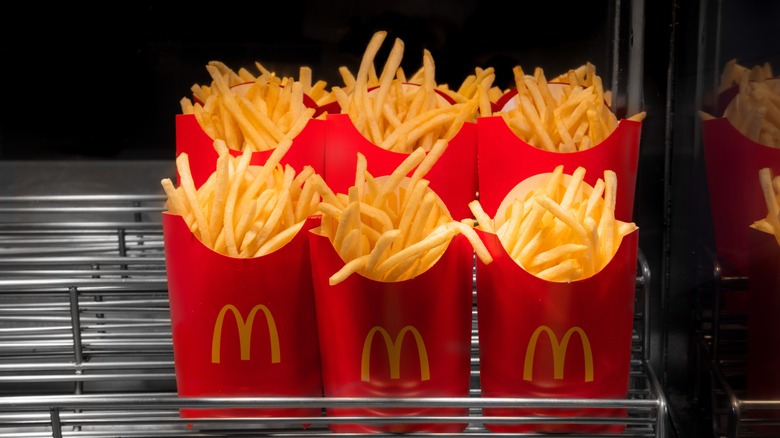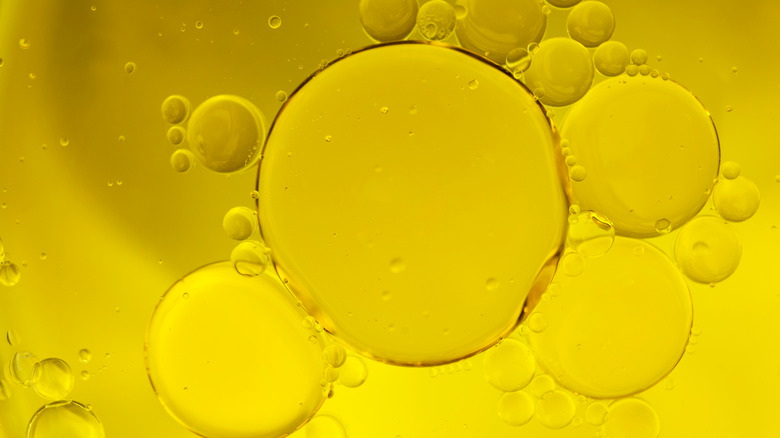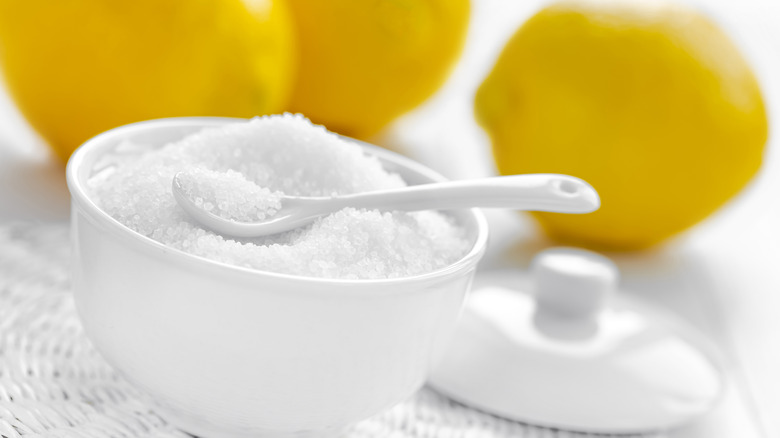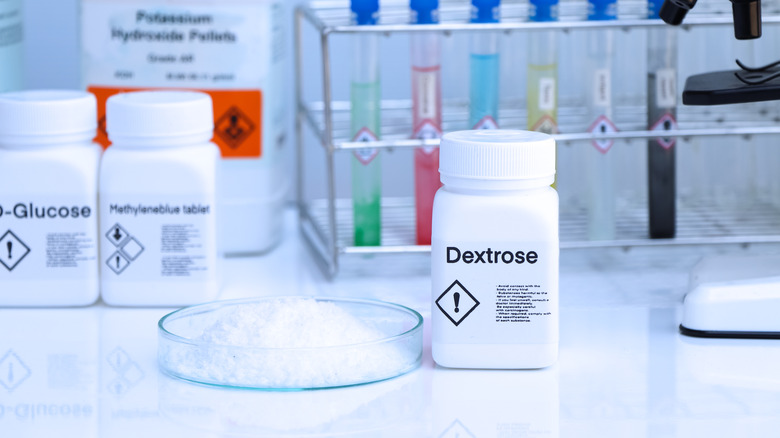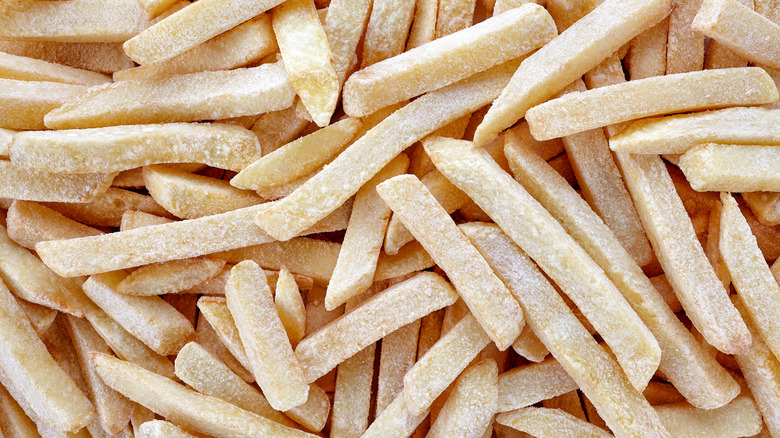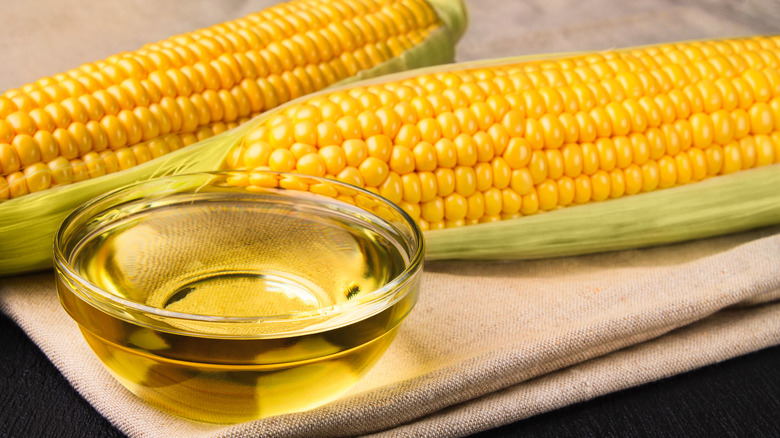McDonald's French Fries Have Way More Ingredients Than You Probably Realize
McDonald's french fries are enjoyed by millions globally. They are more than just crispy golden fried potatoes; they comprise an intricate blend of 10 ingredients. While the taste is familiar to most, the specific ingredients often go unnoticed. Although details such as the list of ingredients and nutrition facts are made easy to access on the company's website, complex names like dimethylpolysiloxane or TBHQ might be daunting. For many, the enjoyment of the fries overshadows the need to know what's inside.
At the core of these famous fries are potatoes. But their journey from farm to table involves oils like canola and soybean, natural beef flavoring, and chemical agents like dextrose and sodium acid pyrophosphate, to create the same unique taste many know and love, consistently. Although some of these elements might be slightly adjusted to comply with local or state regulations, the concept remains the same.
Potatoes
McDonald's, in collaboration with J.R. Simplot Co., its frozen fries supplier, sources potatoes from Idaho. In vetting potato candidates for its supply, McDonald's global specifications include parameters such as size, color, and solid content. These factors, coupled with Idaho's favorable soil and climate conditions, enable the production of potatoes that meet McDonald's "gold standard quality."
According to the data from the Idaho Farm Bureau Federation, in 2018, McDonald's sourced over 270 million pounds of potatoes from Idaho and actively engaged with local farmers for research and quality assessment. Among the types of potatoes selected by McDonald's for its fries are Shepody and a variety of Russets, such as Burbank, Ranger, Umatilla, and Ivory.
While genetically modified (GMO) potatoes have seen advancements, McDonald's has chosen a different path. The "Innate" potato by J.R. Simplot, designed to be less prone to bruising and produce fewer potentially harmful compounds, represents a significant innovation in the industry. However, McDonald's has publicly stated that it does not intend to source GMO potatoes, adhering to its commitment to specific quality standards.
Oil blend in frozen fries
McDonald's fries achieve their signature crispiness through a blend of oils, including canola oil, soybean oil, and hydrogenated soybean oil. These oils are used to partially fry the fries at the supplier's facility before they're frozen and shipped to restaurants. This initial frying not only contributes to the crispy texture but also streamlines the cooking process at each McDonald's location.
In the context of trans fats, a subject that has raised health concerns, McDonald's has made conscious efforts to reduce these harmful elements in its fries by using the aforementioned oils. Although hydrogenated soybean oil is included in the blend, it's worth highlighting that fully hydrogenated oil, particularly the soybean variety, does not contain trans fat; instead, it contains stearic acid, which won't impact the production of bad cholesterols. This approach to oil selection reflects McDonald's commitment to healthier oil, as evident in the fries' nutrition facts, which lists 0 grams of trans fat.
Natural beef flavor
McDonald's French fries were originally cooked using beef tallow, a mixture of beef fat and vegetable oil. This blend was primarily a cost-saving measure but also imparted a unique flavor and texture. Ray Kroc, who acquired the franchise rights, preferred this method and optimized it, creating innovative potato curing techniques and a cooking time calculator. These adjustments resonated with both everyday customers and culinary figures, aiding McDonald's global expansion. In the '90s, cholesterol concerns related to heart health led to a switch from beef tallow to 100% vegetable oil. This change altered the distinctive beef flavor of the fries, resulting in a lighter, less robust taste.
Today, McDonald's fries are cooked in all vegetable oil, with added "natural beef flavor" to mimic the original taste. This flavoring is introduced during partial frying at suppliers' facilities. Interestingly, the flavoring doesn't come from actual beef but hydrolyzed wheat and milk derivatives, proteins that have been broken down to create a beef-like flavor. These flavoring components might prompt consideration for individuals with wheat or milk sensitivities.
Citric acid
Citric acid is added to the potatoes during the processing stage at McDonald's supplier level, a crucial step for the fries, which are partially fried and then frozen. Since oil can degrade and lose integrity over time, citric acid acts as a preserving agent. It slows down oxidation and prevents the oil from turning rancid, thus maintaining the stability of the oil. This ensures the consistency in taste and quality of each batch of fries, aligning with McDonald's emphasis on standardization.
While citric acid might seem like a specialized ingredient, it's worth noting that its application in the food industry is quite widespread. Being extracted from citrus fruits, its industrially produced form is commonly used as an additive for multiple purposes: to preserve food, increase acidity, and add flavor. Interestingly, the food and drink industry consumes approximately 70% of all the manufactured citric acid, highlighting its widespread use in consumables.
Dextrose
Dextrose, a form of glucose derived from corn, is specifically used in McDonald's french fries' production to achieve a consistent golden color. During the blanching process, when the fries are partially cooked in hot water or steam, dextrose helps preserve the color through freezing and subsequent cooking.
Many associate dextrose with sweetness, but the use of it in these fries isn't to add a sweet taste but to maintain the desired color without affecting taste. Food experts affirm that the application of dextrose in this manner is generally considered safe and not a health concern. It's a natural form of sugar that, in this context, is used to facilitate the retention of visually appealing color, preventing the potatoes from turning an unattractive grayish hue after cooking. While the benefits of dextrose in maintaining color are clear, it's worth noting that excessive consumption can lead to health complications, including heart disease, diabetes, and even liver and kidney problems, as explained by WebMD.
Dimethylpolysiloxane
Dimethylpolysiloxane, or PDMS, plays a unique role in McDonald's frozen fries and is added as an antifoaming agent at the supplier's facility. This step is crucial because, when hot oil interacts with moist food like fries, it can lead to foaming that causes oil splatters and inconsistent cooking. By adding PDMS during the preparation of the frozen fries, the chain ensures that when they are fried at individual restaurants, this foaming issue is controlled, creating a safer cooking environment.
Beyond its use in food preparation, PDMS is found in various industries, including the manufacturing of products such as silly putty. It is also found in various skin and hair care products we use daily. Comprehensive studies have also confirmed that PDMS is safe to consume as a food additive, approved by organizations like the U.S. Food and Drug Administration (FDA), European Food Safety Authority (EFSA), and the Joint FAO/WHO Expert Committee on Food Additives (JECFA)
Sodium Acid Pyrophosphate
Potatoes undergo discoloration when cut and left exposed to oxygen in the air, compromising the appearance of the product. This greying or browning can make them look less fresh and appealing. To prevent this from happening, McDonald's supplier adds sodium acid pyrophosphate (SAPP) to the potatoes as they are being processed as frozen fries. In addition to maintaining color, SAPP also protects the potato's texture after they're fried.
SAPP's application isn't restricted to just potatoes; it's utilized across various food products. In baked goods, it acts as a leavening agent, and in canned seafood, it helps maintain color consistency. SAPP is known to have minimal risk when consumed orally, showing no signs of harm to genetic structures or connections to cancer development. Its use within the food industry is subject to meticulous regulation, receiving safety endorsements from international authorities such as the FDA, and is classified as generally recognized as safe (GRAS).
Salt
Salt is one of the most fundamental ingredients in McDonald's french fries, and it serves more than just adding a savory taste to the potatoes. Beyond its role as a flavor enhancer, it plays a part in achieving the desired crunchy texture. When freshly fried potatoes are still hot, the addition of salt helps draw out excess moisture, promoting a crispy and golden exterior. This is one of the secrets to making the best french fries.
While the precise amount varies by location and customer preference, the standard serving of McDonald's fries contains approximately 260 milligrams of sodium per medium-sized serving. This figure represents a calculated balance that appeals to a global palate, ensuring the fries are neither too salty nor too bland.
For those concerned about salt intake, McDonald's does provide the option to order fries without added salt. Customers can request a no-salt batch when placing an order, though a minor amount of salt may still be present due to potential transfer from the bin or scoop.
Corn oil for deep frying
Among all the oils used by McDonald's for its fries, we want to highlight corn oil here. This oil wasn't part of the blend used during the partial frying process at the supplier's facility, a process famously investigated and reported in detail in a video by the late Grant Imahara.
Corn oil is rich in polyunsaturated fats and known for its high smoke point, making it suitable for high-temperature frying. By integrating corn oil, McDonald's aligns with a growing trend towards oils that are perceived as more healthy, containing linoleic acid, a type of omega-6 fatty acid, essential for the human body. However, it's worth noting that the concern surrounding omega-6 is that a high ratio of omega-6 to omega-3 can contribute to inflammation and other health issues, as explained by Healthline. Additionally, the sourcing of corn oil often involves genetically modified corn, a factor that may cause discomfort and raise health concerns in some people.
TBHQ
Tertiary butylhydroquinone, known as TBHQ, is an antioxidant-type additive used in preserving the cooking oil for McDonald's fries. When oil comes into contact with oxygen, it frequently leads to rancidity by creating free radicals, which in turn play a role in altering the flavor and aroma of cooking oils. TBHQ helps by preventing oxidation from happening, thus maintaining freshness and shelf life stability of the oil.
The application of this substance is not exclusive to McDonald's; it is also found in a wide range of processed food items, including frozen meals, snacks, and instant noodles. However, the FDA has set guidelines that TBHQ should not exceed 0.02 percent of the oils in food products. This regulation emphasizes the importance of controlled levels for safety, not necessarily a danger indication, and reflects ongoing studies about its long-term effects on health. Apart from food products, TBHQ is used in non-food items such as paints, coatings, and skincare products.
